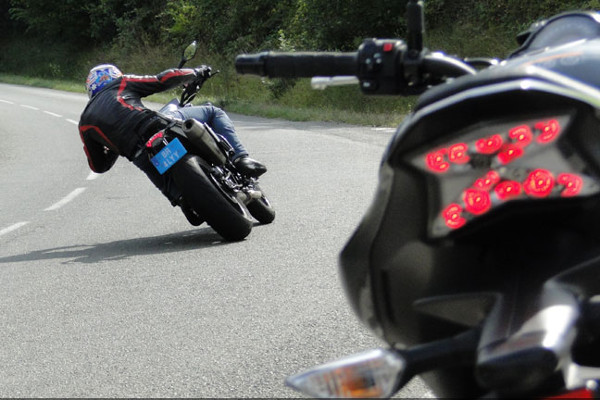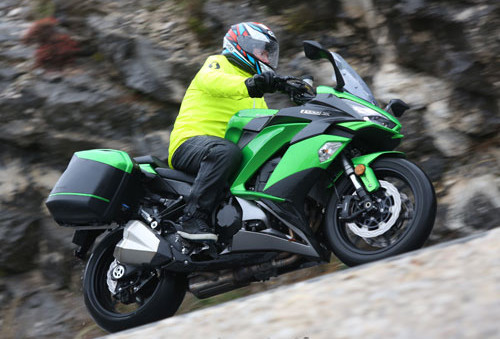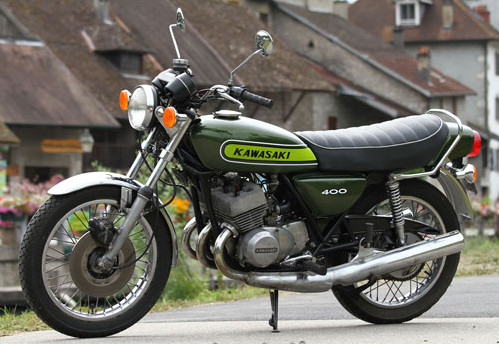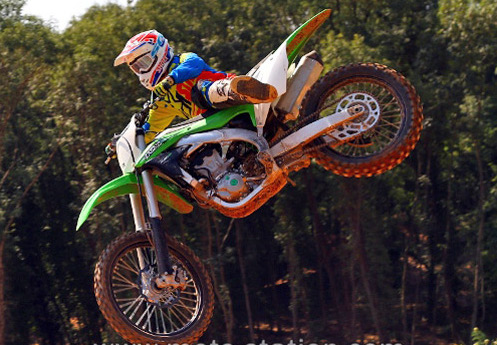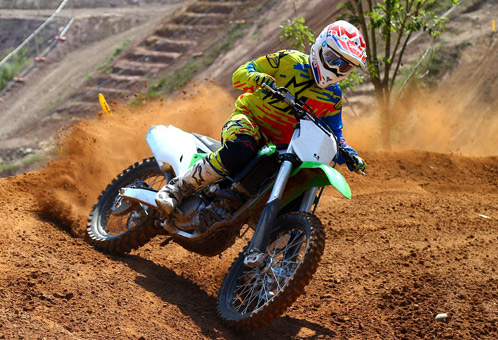Unveiled in September, the Z125 and Ninja 125 land in mid-December concession. Kawasaki allowed us to try out its two new 2019 features on the road then on the track (s) with Ana Carrasco, world champion Supersport 300. Roulez jeunesse!
The MT125, 125 Duke, CB125R on one side, YZF-R125, GSX-R125 or RS4 on the other ... The holders of the A1 license were already spoiled for choice in terms of small roadsters or mini sports. But Kawasaki complicates the deal by returning to the 125cc motorcycle market with two new 2019!
Two weeks before Christmas, the Akashi company will market a new offer generated by strong demand: " our Z125 and Ninja 125 are designed exclusively for Europe, at the request of our dealers and their customers ", we learn Japanese and European Kawasaki.
Special report MNC : All new products 2019
Ninja 125 and Z125 : Kawasaki rejuvenates its 2019 motorcycle range
Presumably jealous of the sales of their fellow red, blue or orange on the Old Continent, the Greens have decided to reinvest this important segment - not to say capital, since the bikers most often maintain a special relationship with the brand that put them the boot on the footrest.
For Kawasaki, it is actually a second return on the 125 cc segment: in 2010 already, the Japanese brand had revived the assault of young bikers (from 16 years) with two models: the KLX and D-Tracker, which shared the same basic mechanics.
Kawasaki Z125 and Ninja 125: for bikers of generation Z or ZX-R?
Unfortunately for Kawa, the trail 125 and its supermotard version have never managed to replicate the success of the KMX and KDX another "2-stroke" ... At the forefront of fashion in the 90s, this type of gear does not make any more recipe. Ditto for the customs 125: a new generation of Eliminator was eliminated automatically!
To bait and iron the "youth" of the twenty-first century, motorcycle manufacturers have better interest in imitating their best-sellers of medium or large capacity. That's why Kawasaki is launching this year a mini Zed and a little Ninja!
Kawasaki Z125 and Ninja 125: for bikers of generation Z or ZX-R?
In France, the roadster Z will undoubtedly attract more customers than the Ninja sports: " we count on 80% of Z125 and 20% of Ninja 125 ", confirms Antoine Coulon, marketing and communication manager at Kawasaki France while in Paris. other countries (mainly in Great Britain), the proportions could be reversed.
According to surveys conducted prior to the project, the main reason for buying a 125cc motorcycle is style (37% of customers). From this point of view, Kawasaki scores big points since the Z125 looks like a Z900! In the color white / black, the relationship is even particularly striking ...
Kawasaki Z125 and Ninja 125: for bikers of generation Z or ZX-R?
The lines - which start from the top of the tank, go down on the saddle and go back to the saddle the passenger jump seat - are almost superimposable! The frames in steel tubes do not have the same features, but their special shade in green "tart apple" skillfully bring them together.
It is regrettable, however, that the boiling of the small Zed does not look more like that of the 900: front view, the little "Kawette" looks more like Honda 600 Hornet! Similarly, we would have appreciated that the muffler is shorter on the Z125, even if it is larger as is the case on the Z900, precisely.
Kawasaki Z125 and Ninja 125: for bikers of generation Z or ZX-R?
Axially Mounted Front Caliper and Straight Swingarm: Mini Zed shares two reasonable choices with the Z900. It is also inspired by the Z650 by selecting a "non-inverted" fork, basic but sufficient? MNC will try to check it during this test ...
The brake discs of the Z125 are petal cut, like the vast majority of Kawasaki production (except for the Ninja H2 and ZX-10R which are equipped with Brembo). Does the Ninja 125 do the same? No, because the little sports car does not differ from the roadster in mechanical terms (read our technical point on the last page).
Kawasaki Z125 and Ninja 125: for bikers of generation Z or ZX-R?
From an aesthetic point of view, the "ZX-R" 125 looks nothing like its older, unlike the Z125 ... and contrary to what we would believe Kawasaki! Only the decoration of the fairings of the special editions "KRT Replica" of the two sports launch a - fragile - bridge between the Superbike and the 125cc.
For 27% of customers, what counts first in the purchase of a 125 is the brand! With its mass of high-performance models, Kawasaki here inscribed other valuable points for its mini Ninja which circulates on a tiny segment: only half a thousand registrations in France last year for all sports 125.
Made for Europe in Indonesia
The overwhelming dominance of Jonathan Rea in World Superbike for four years has also "branded" the minds of amateurs - warned - of motorcycle speed. What to boost sales? In Northern Ireland, Johnny's homeland, maybe. In France, MNC hardly believe it: the Motorcycle Journal of the Net would bet more on a jump of sales in Southeast Asia.
In Malaysia, Thailand or Vietnam, the fervor for motorcycle racing continues to grow. In Indonesia too? Maybe more! This is where the two new Kawasaki 2019 novelties are produced. After all, KTM manufactures its mini Dukes in India, at its partner Bajaj.
Kawasaki Z125 and Ninja 125: for bikers of generation Z or ZX-R?
Unlike the Yamaha MT and YZF-R125 (among others) coming out of the MBK factory in France, the Z125 and Ninja 125 are not stamped with an estimate "made in France", nor even a consensual "made in Europe ". The Akashi firm answers the most important point for 7% of 125 customers: being financially affordable.
In their solid blue color (pile between the deep blue Yamaha and electrifying blue Suzuki), the mini Z and the small "ZX-R" are respectively displayed at 4599 and 4899 euros (count 100 euros more for decorations more sought). A quick market study puts the two Kawasaki in the middle, no more and no less.
Kawasaki Z125 and Ninja 125: for bikers of generation Z or ZX-R?
For these prices (that of a recent occasion of average cubic capacity!), We would have liked anyway that Kawasaki pays a little more attention to the finish, painting some engine parts in black for example: radiator, starter and injection bodies denote too much in gray. Similarly, some cables and wires are too obvious.
On the other hand, MNC still does not understand why Kawasaki insists on putting unnecessary - not to say super-ugly - overlaying frames on his Z (125, 650 and 900): caches slipped from below would suffice, no ? Unless the Japanese want to hide too coarse welds? In that case...
Kawasaki Z125 and Ninja 125: for bikers of generation Z or ZX-R?
Just next door, the driver's footrest plates do much better. On the right, the brake pedal seems rudimentary but its shape and its cut make it perfectly functional. The footrests are generously rubber-lined at the front, but not at the back.
On the handlebars, the small or - very - large size would have appreciated to be able to adjust the spacing of the clutch levers and front brake. However, Moto-Net.Com ensures that the majority of users will be perfectly satisfied with the compromise chosen by Kawasaki.
Kawasaki Z125 and Ninja 125: for bikers of generation Z or ZX-R?
Like the price, the appearance of big motorcycle is the main asset of a 125 for 7% of bikers ... Again, small Zed and Ninja only half fill the contract: in photo, profile or three-quarter views before, they can make impression.
Facial views on the other hand, from the back or the top, they do not deceive anybody ... And that's good, because these two novelties Kawasaki 2019 should be easy to take "gloves"! Moto-Net.Com will be able to check it by trying them both in the southern tip of Spain, where the temperatures are still soft and the tarmac dry ... but sometimes slippery! In the saddle on the next page,












